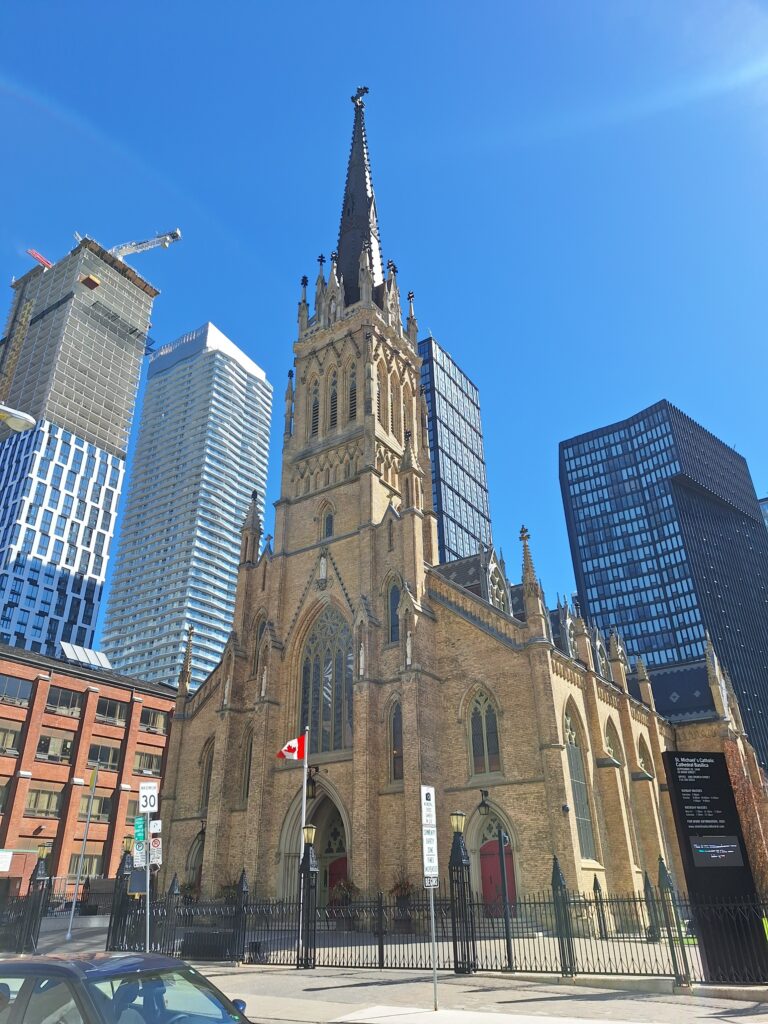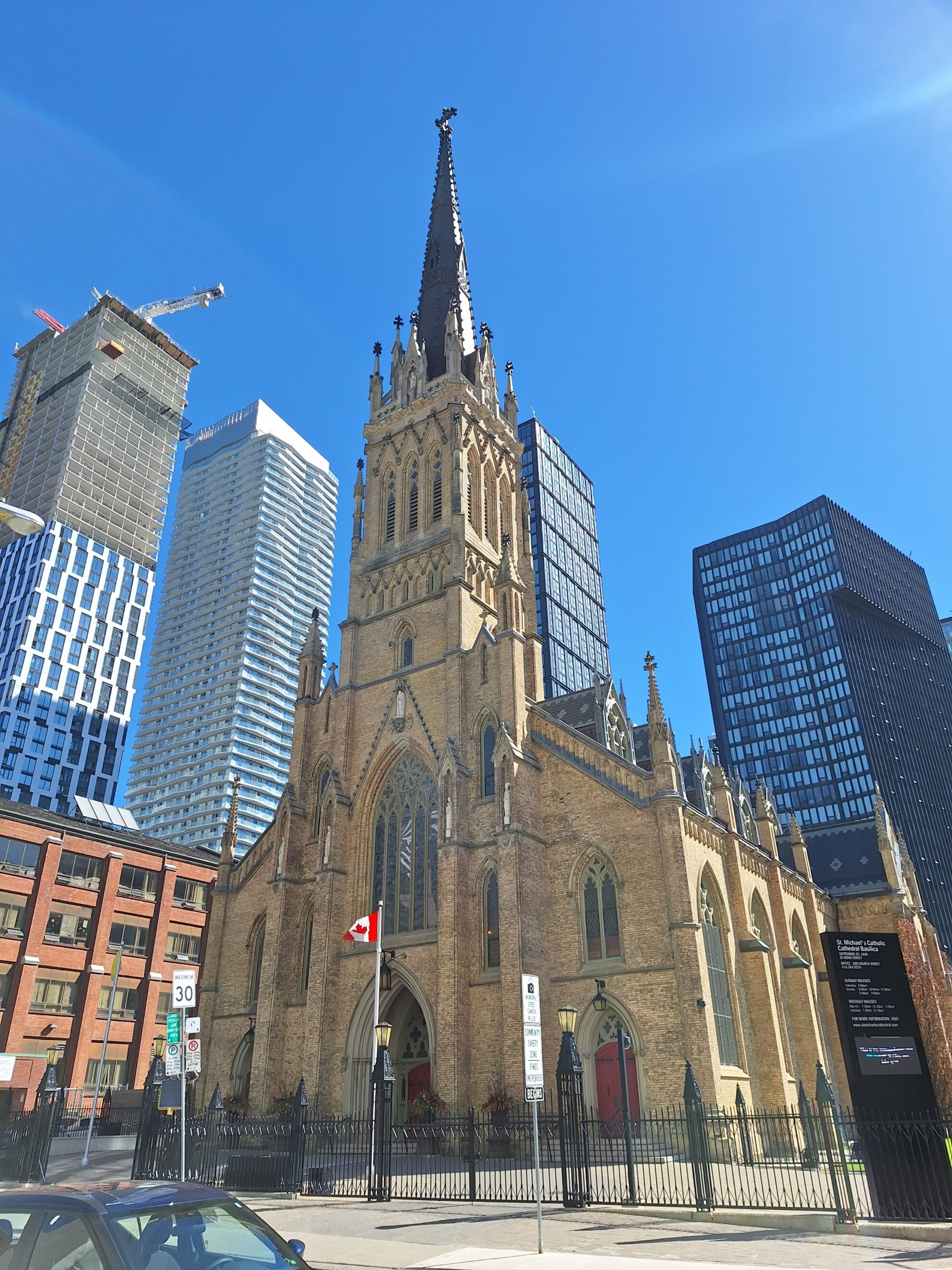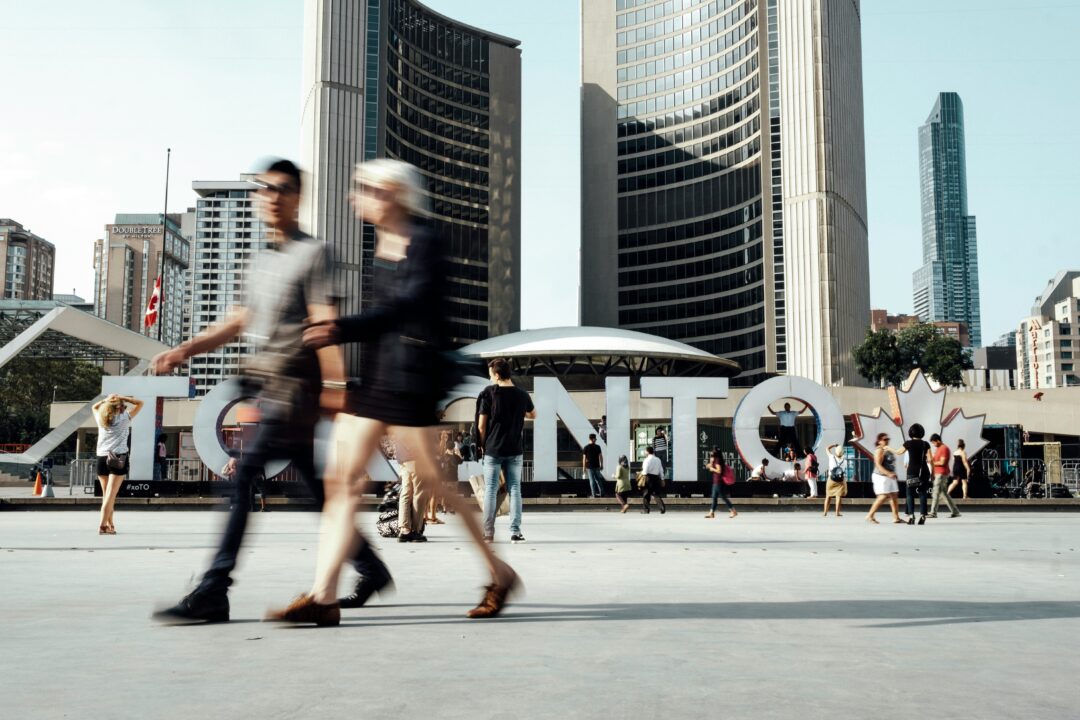By Bruce Bell, History Columnist –
Consecrated in 1848, the cathedral recently underwent a restoration to revive the hand painted ceiling and the stained-glass windows.
A few years back, St. Michael’s Cathedral Basilica on Bond Street reopened after exhaustive renovations. Today the cathedral is just as spectacular as when it opened in 1848.
A century-and-a-half of grime, coal dust, candle wax and everyday pollution were all scrubbed down. Where a dark and shadowy interior hid its architectural treasures, they have once again been brought into the light.
In 1806 the Reverend Alexander Macdonell, then the only Catholic priest in Upper Canada, left Kingston to visit York, which then had about 500 people. Macdonell learned that the town had 37 Catholics without a church, and that many had never seen a priest.
In March 1806, the Crown granted a plot of land on the northeast corner of George and Duke (now Adelaide) Streets to erect a chapel for public worship. That first church burnt down as the city’s Catholic population continued to grow.
By 1841 Pope Gregory XVI chose Father Michael Power to be Toronto’s new bishop. In a city then with 13,000 people, Power presided over 3,000 Catholics. He wanted a new and larger cathedral for his growing flock.
In 1845, Bishop Power wrote in his journal, “I have bought land in the centre of the city to build a cathedral.” Under the watchful eye of architect William Thomas, who five years later designed St. Lawrence Hall, work began on the new St. Michael’s Cathedral on April 7, 1845.

St. Michael’s Cathedral Basilica. Photo: Bruce Bell
As was the practice in mediaeval cathedral construction, men from the community dug the foundation and finished off the workday feasting on a great ox barbecued on a spit. On May 8, 1845, on the Feast of the Apparition of St. Michael, Bishop Power laid the cathedral’s cornerstone, including fragments of a stone pillar of the old Norman York Minster Cathedral in England.
Tending to the thousands of Irish famine victims flooding into Toronto, Power contracted typhus and died on October 1, 1847. He is buried in the crypt of his new cathedral.
St Michael’s Cathedral was consecrated on September 29, 1848, the Feast of St. Michael, by Ignace Bourget, Bishop of Montreal, who sealed into the high altar relics of the first pope, St. Peter.
In 1850 French-born Armand-Francois-Marie de Chabron de Charbonnel became the next bishop. While the Protestant elite viewed Catholics with suspicion, Charbonnel was held in high esteem as something most Protestant leaders were not: a blue-blooded aristocrat, a count of a noble French family.
Upon his arrival in 1850 Bishop de Charbonnel took one look at the rather bland interior of St Michael’s and set out to have it beautified; he had been consecrated in the Vatican’s Sistine Chapel.
Charbonnel ordered three stained glass windows from France, installed in 1858 on the east side. He also imported the Stations of the Cross, which is why the inscriptions under each station is in French.
After 10 years, Bishop de Charbonnel was followed by Bishop John Joseph Lynch, who set out to complete de Charbonnel’s vision of a great Catholic cathedral in Toronto.
He hired architects Henry Langley and Thomas Gundry to construct the spire of St Michael’s, and in 1870 added the dormer windows to the dramatically sweeping roofline. Sunlight through the dormers creates a breathtaking effect on the detailed painted ceiling.
Lost and hidden underneath a century and half of grime and soot, that stunning ceiling has been restored with hand painting. The stained-glass windows, icons, doors, the crypt and more have been meticulously restored or rebuilt.
In honour of the church’s rich history and overall beauty, Pope Francis bestowed a new name on it: St. Michael’s Cathedral Basilica. Only two churches in Toronto have that title, the first being St Paul’s Basilica on Power Street (near Parliament). Canada has 21 basilicas, there are 1,810 worldwide.
St Michael’s was rededicated on the Feast of St. Michael, on September 29, 2016, by Thomas Cardinal Collins, Archbishop of Toronto.
You don’t have to attend a Mass or even be a Catholic to visit this incredible basilica – it’s part of our history.




